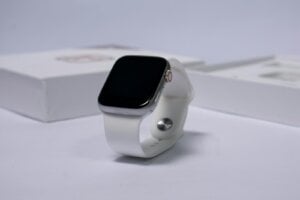Apple Watch’s Blood Oxygen Sensor Returns: Here’s What It Does and How It Works

Apple continues to prioritize health and wellness in its wearable lineup, most notably through the blood oxygen sensor first introduced with the Apple Watch Series 6. This technology measures the amount of oxygen carried by red blood cells from your lungs to the rest of your body—data that can help you understand how well your heart and lungs are working.
Low oxygen levels may signal potential health concerns such as respiratory or cardiac conditions, and tracking this data can also reveal irregularities in breathing patterns during sleep, including possible sleep apnea.
The Return of Blood Oxygen Monitoring
After being unavailable for more than a year due to a patent dispute with medical technology company Masimo, Apple has reintroduced the feature with a redesigned system. As of mid-August, blood oxygen measurements are back on the Apple Watch Series 9, Series 10, and Ultra 2, through watchOS 11.6.1 and iOS 18.6.1.
Previously, the Apple Watch processed and displayed readings directly on the device. The updated version now uses the paired iPhone to perform calculations and display results, a change that allows Apple to sidestep the earlier patent issues.
How the Sensor Works
The blood oxygen sensor is integrated into the back of the watch case, combining four LED clusters and four photodiodes. During a reading, the LEDs shine green, red, and infrared light onto the blood vessels in your wrist, while the photodiodes measure how much light is reflected back. The color and amount of reflected light indicate your blood’s oxygen saturation level.
You can take a manual reading anytime through the Blood Oxygen app, or the watch can automatically capture readings throughout the day and night. Typically, healthy oxygen levels range from 95% to 100%, while consistent readings below 90% may warrant medical attention.
A Wellness Tool—Not a Medical Device
Despite the feature’s sophistication, Apple emphasizes that the Blood Oxygen app is designed for general wellness and fitness, not for medical diagnosis or treatment. Readings may vary depending on environmental conditions—such as altitude—or how snugly the watch fits on your wrist.
If your readings appear consistently low, Apple advises consulting a healthcare professional rather than relying on the watch for medical interpretation.
Setting Up and Managing Readings
To activate the feature, open the Watch app on your iPhone, go to Blood Oxygen, and enable Blood Oxygen Recordings. You can also adjust when background measurements occur—for instance, disabling them during Sleep Focus or Theater Mode to avoid the bright red light.
You can view your results in the Health app on your iPhone. The app displays daily, weekly, and monthly trends, helping you monitor your oxygen levels over time. For additional context, Apple includes educational links—such as resources from the Mayo Clinic—to help users understand what their readings mean.
The Bottom Line
With the blood oxygen sensor’s return, Apple continues its push into health technology while balancing innovation with regulatory and legal challenges. Though not a medical device, the Apple Watch remains one of the most capable wellness wearables available, offering valuable insights into users’ overall health and fitness.
Newer Articles
- U.S. Moves Closer to Banning TP-Link Routers Over National Security Concerns
- Samsung Teases Its First Trifold Galaxy Z Smartphone in Korea
- NEW NASA PICTURES OF 3I/ATLAS LEAKED!

